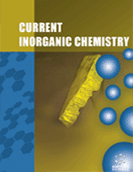Abstract
[MoBr2(CO)3(L)2] complexes were synthesized with L = nicH (pyridine-3-carboxylate), picH (pyridine-2- carboxylate) and pydcH2 (pyridine – 2,6 – dicarboxylic acid). New lamellar materials intercalated with molybdenum(II) complexes were prepared by first calcinating the starting lamellar material at 823 K for four hours, to eliminate all the carbonate ions; the layered structure was reconstructed after treatment with a basic solution of either nicH, picH, or pydcH2 in a dmf solution of NaOH at 343 K. Impregnation with a solution of the organometallic precursor [MoX2(CO)3(NCCH3)2] (X= Br, X= I) led to substitution of the nitriles by two L ligands. All the Mo(II) complexes were characterized by FTIR, elemental analysis, and 1H and 13C solution NMR, and the materials by powder X-ray diffraction, FTIR and 13C CP MAS-DD solid state NMR. Both the complexes, their iodide analogues, these new materials (3.80 wt% and 1.25 wt% Mo for pic or pydc) and their iodide analogues (4.54 wt% and 6.33 wt% Mo for pic or pydc) catalyze the epoxidation of ciclooctene and styrene and the chiral olefins R(+)- and S(-)-limonene at 328 K. Higher activity is associated with presence of iodide and nicH.
Keywords: Molybdenum, layered materials, epoxidation, heptacoordination, catalysis, hydrotalcite, Clays, NCCH3, Organometallic Fragments, Epoxidation of Olefins
 6
6

